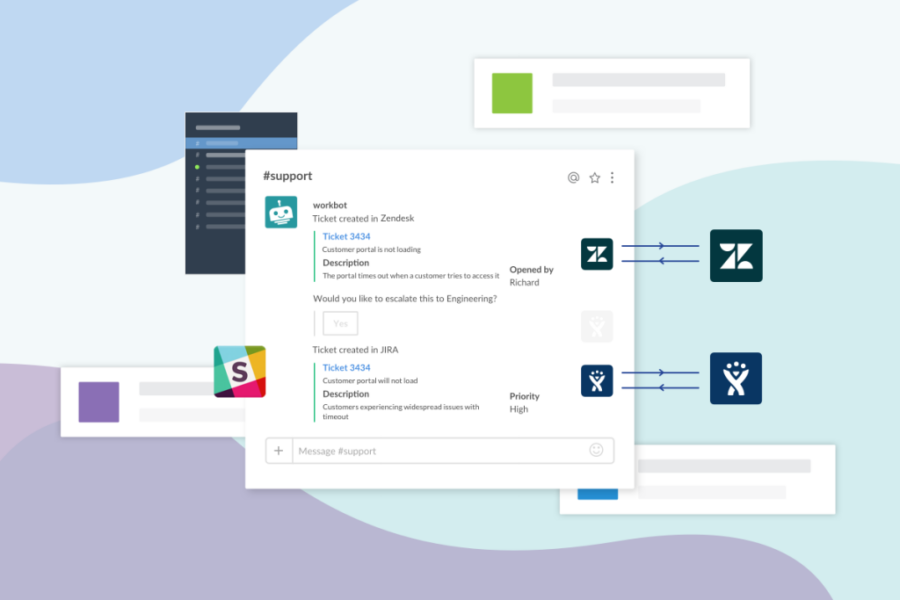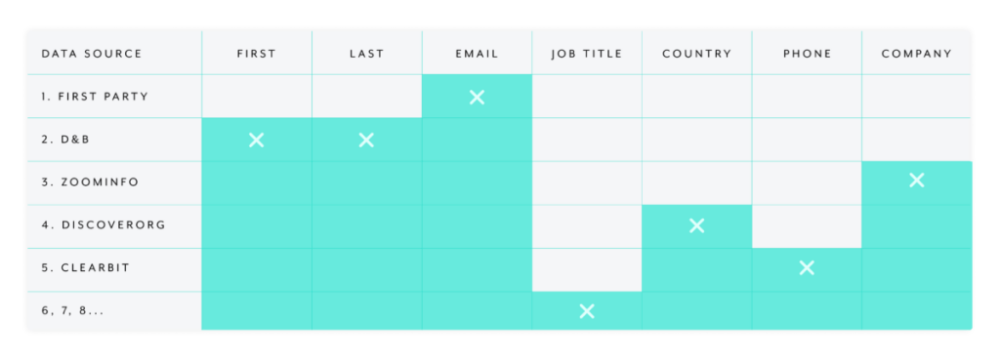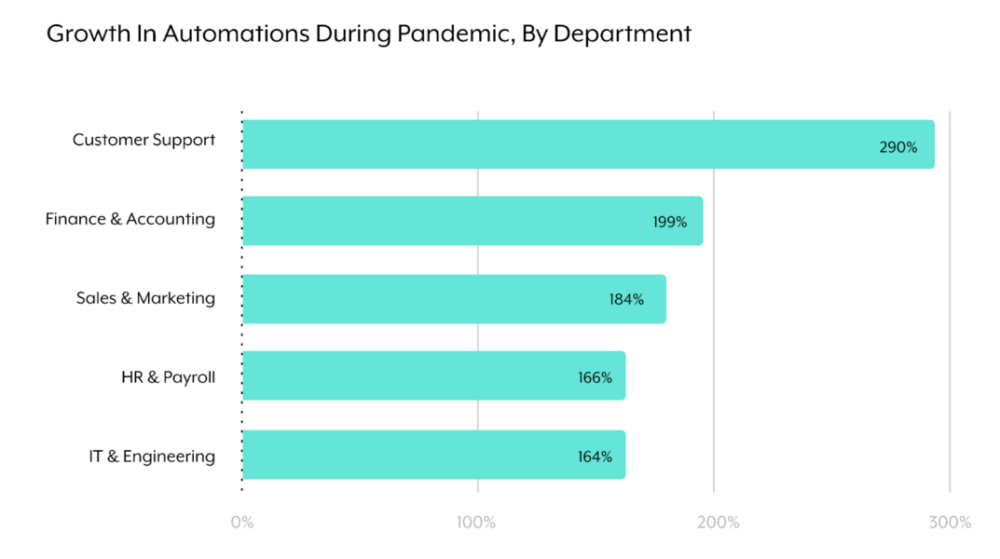According to our platform’s usage data, automation adoption has expanded by leaps and bounds across teams.
This exponential growth reflects the growing recognition of automation’s value—where it offers efficiency improvements, innovation opportunities, greater business agility, and a whole lot more.
We’ll dive deeper on these benefits to help you better understand the full ROI potential of automation; we’ll also explore a myriad of automation ideas to help you and your teams ideate solutions. But to start, let’s align on the definition of workflow automation.

Turn your ideas into reality
Implement any automation idea without writing a single line code with Workato, the leader in enterprise automation.
What is workflow automation?
Simply put, it’s a type of automation that streamlines a business process end-to-end.
It’s worth noting that in order for workflow automations to run at the required speed and scale, they’re typically built on a foundation of API-based integrations.
11 automation ideas worth implementing
To help spur your brainstorm, let’s cover a variety of automations that different teams can build.
IT
From empowering employees to mitigating security risks, IT can leverage automation in countless beneficial ways.
Build an intelligent service desk
Your employees will often have the same questions at different points in time. These can be around accessing an office, resetting a password for a specific application, connecting to a printer, etc.
Instead of having IT answer them over and over again, you can set up a service desk automation that allows employees to get answers on their own, fast.
Here’s an example of how this can work:
Essentially, a customized platform bot, “IT Bot,” allows employees to search articles in an application like Zendesk using specific filters—all without leaving your business communications platform. The bot retrieves and shares relevant articles in near real-time, which (hopefully) address the employees’ questions.
Streamline application provisioning
Application provisioning goes beyond giving employees access to applications on day 1. As employees’ roles evolve at your company, and as your tech stack shifts, continual provisioning will prove inevitable.
You can empower IT to easily and quickly provision applications for a particular employee by using the following provisioning automation:
Through a customized platform bot, “Firefighter,” the employee submits the provisioning request. A specific channel in your business comms platform for app requests gets posted, where an employee in IT can review and approve (or reject) the request. Finally, the beneficiary and requestor receive notifications in your business comms platform that alerts them of the request’s outcome.
Popular Snowflake integrations
Fast-track incident resolutions
Your organization will inevitably experience a wealth of issues that affect IT, from devices breaking to applications experiencing downtime. To address any issue quickly, yet thoroughly, you can turn to automation.
For instance, you can build an automation where any time an employee experiences difficulty with an application, they can log the issue via a customized platform bot in your business communications platform. The platform bot goes on to create a ticket in your ITSM tool, which gets shared with IT in a specific channel within your business communications platform. An individual in that channel can assign the issue to someone in their team so they can begin working to resolve it.
Finance
Like IT, the finance team has a number of potential automations they can implement.
Deliver an efficient procure-to-pay process
Similar to applications, your employees will need different types of equipment and devices over time. To help them acquire what they need, when they need it, you can automate your P2P process as follows:
You’ll integrate your procurement tool (e.g. Coupa) with your ERP system (e.g. NetSuite) and the vendor’s ERP system. You can then build a workflow automation where once a procurement request gets submitted and approved, purchase orders get created in the procurement tool and ERP systems.
A supplier can go on to fulfill the order, and once it’s marked as received in the procurement tool, the supplier gets notified and can create the invoice. This invoice creates a bill in your ERP system, where finance can review the details of the bill and pay it—which gets reflected in the POs of each connected system.
Implement a more seamless order-to-cash workflow
As a critical process in finance, and for the business more generally, it’s essential that you prioritize automating O2C.
As a starting point, you’ll want to implement some version of the following (for more advanced O2C automations, you can visit this article): Once an order gets added in a CRM like Salesforce, a corresponding order gets added to an ERP system like NetSuite (you’ll need to map the order fields between the two systems to ensure the orders are fully synced).
HR
Automation is fundamental to delivering a best-in-class experience for candidates and employees. You can uncover specific scenarios for applying it below.
Empower employees to submit referrals
Your employees can be a key source of referrals. After all, they likely have an expansive professional network and are intimately familiar with the culture at your organization, making them uniquely positioned to identify those who can be a great fit for your business.
You can make it easy for them to tap into their professional network by using a customized platform bot—“Referral Bot”—that lets them submit their referrals within clicks in your business communications platform.
Schedule lunches between new hires and their team members
Aside from giving employees access to the applications and equipment they need from the get-go, you can help them feel welcomed by scheduling lunches with their new teammates.
Here’s an automation that does just that:

Once your HRIS identifies employees who’ve joined within a certain time period, the workflow gets triggered. Google Calendar invites get created and sent to the new hires and their teammates, which includes Zoom invitation details. Gift cards are also purchased and provided to both parties (via a business communications platform) so that they can enjoy their lunches for free.
Customer support
The rapid growth in customer support automations can be attributed to all of the valuable forms it can take. Let’s explore just a few of them.
Escalate issues
In many cases, a support rep can’t resolve a customer issue themself.
When that’s the case, they’ll likely need to involve colleagues in other departments—often engineering—to get involved on their behalf.
You can enable reps to escalate issues quickly, and thereby resolve incidents faster, by implementing a customized platform bot that lets reps escalate issues within a few clicks.

Once escalated, the platform bot creates the ticket in the system the escalation team uses. The bot also shares the newly-created ticket with the escalation team in a specific channel within your business communications platform, allowing them to become aware of the issue and work on it swiftly.
Monitor churn risks
Left to their own devices, your support reps would have trouble identifying clients that are most at risk of churning.
You can make the process easier for them to handle by using product usage data. More specifically, you can design an automation where once a client’s level of product usage drops below a predefined threshold, the assigned support rep gets alerted via your business comms platform, empowering that rep to respond quickly.
Sales
You can use automation to improve your lead response times, lead enrichment process, among a host of other sales-related processes. Let’s review the aforementioned use cases in more detail.
Enrich leads cost-effectively
To effectively determine the leads that are worth pursuing, you’ll likely need to enrich them with 3rd-party tools.
Here’s how automation lets you perform lead enrichment comprehensively and quickly, while minimizing the associated costs.

The automation starts by collecting first-party data on the lead (in the example above, this only includes the lead’s email address). Then, you use your preferred data enrichment tool to uncover additional information (the example above lists D&B as the preferred tool, and it finds the lead’s first and last name). This process repeats until all of the required information on the lead gets filled out, at which point it’s ready to be routed.
Route leads intelligently
Once a lead enters your ecosystem, you’ll likely want your reps to respond as quickly as possible. To help facilitate this, you can use a customized platform bot—”Lead Bot”—to share the lead with the assigned rep in your business comms platform. The bot’s message can include a variety of information on the lead, such as the message the lead provided when filling out the form, their existing information from your applications, and the enriched data found in 3rd-party tools.
The rep can then choose whether to accept the lead within the business comms platform; and if they do, all the information that’s made readily available should help them feel confident in following up.
5 benefits of automation
In case you need any more convincing, here’s why automation is critical to adopt.
1. Higher efficiency and lower costs
Since automation allows your employees to avoid re-keying data across systems, your processes can move faster and result in less human errors.
There are multiple layers of cost savings to consider as a result. Since employees spend less time on data entry-related tasks, you can save on the costs associated with labor; and by experiencing less human errors, your team doesn’t need to dedicate as much time and energy toward resolving mistakes.
Related: The top 7 benefits of workflow automation
2. Better experience for key stakeholders
Based on our various automation ideas, you likely spotted a trend: Many rely on a customized platform bot that can interact with end-users in the platform they already work on (in our examples, these end-users were employees and the platform was a business communications software).
By providing this centralized, intuitive, conversational, and unified experience, users won’t have to log into various platforms to perform the tasks—which, given the platforms’ diverse UIs, could lead to confusion, wasted time, and costly mistakes. Instead, they can focus more on the business-critical work that they’re uniquely positioned to handle.
It’s also worth noting that this concept of providing a single, intuitive UI that’s connected to backend systems can apply to scenarios beyond platform bots—it can be leveraged in your mobile UX, as an example. Moreover, aside from employees, your customers, partners, students, and a variety of other audiences can benefit from this functionality.

3. Greater business agility
Of the many lessons from the pandemic, we’ve learned that our ability to adjust and adapt to evolving business and workplace conditions is critical. Automation is key to this, as it allows us to modify our processes accordingly, or if necessary, fundamentally change them. In addition, using a low-code/no-code automation platform, these changes can be carried out quickly, all but ensuring that your organization responds successfully.
4. Improved situational awareness
Automation empowers your employees to make business-critical decisions on time. One of the ways it does this is by pulling real-time information from various sources, transforming it into a well-defined data format, and then feeding it into a stream analytics tool. From there, you can create real-time dashboards for various use cases. You can even build real-time alerts through the stream analytics tool so that the appropriate stakeholders can take time-sensitive actions quickly.

5. Endless innovation opportunities
Our automation ideas highlight that if you can think it, chances are, you can implement it. Taking this a step further, your team’s creativity in combining applications, mobile apps, IoT devices, services from business partners, etc. can be what separates you from rivals and helps you succeed for years to come.

Ready to start implementing your ideas?
Learn how Workato, the leader in enterprise automation, can help you and your team implement any automation successfully.

